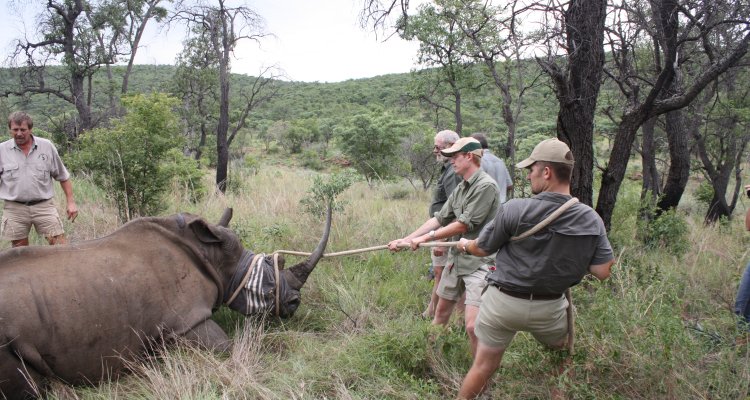
Student testimonial
Student Matthijs Broere - MSc Forest and Nature Conservation
Choices. Choose between eating and the risk of being eaten. As an African mammal, you need to find the optimal balance between the two: no risk means no food! But, too much risk, and you might end up as dinner for the lions. Matthijs Broere, MSc student Forest and Nature Conservation at Wageningen University, went for three months to South Africa for his thesis, to investigate how various animals make their choices. "A better understanding of how different animals spread across the landscape can be very useful for wildlife sanctuaries. After all, they rely on income from tourism."
Every piece of the puzzle is important
"For three months I have lived in the middle of Welgevonden, a nature reserve in South Africa. A beautiful area it was. Sometimes the elephants literally stood two meters before my bedroom window. Once we had a leopard in the garden. During the fieldwork I did for my thesis there was always something to see: from inquisitive rhinos to sleepy lions, from vultures to bushbucks.
The research I performed came down to mapping the spatial distribution of different types of herbivores. At the same time I did a lot of measurements on vegetation characteristics. The theory is that many animals avoid places with poor visibility as much as possible. So when for instance high grass dominates, one expects significantly fewer animals in the area to stick around. Animals respond not only to the immediate presence of a predator, but they also respond to indirect risks: poor visibility means a higher risk of getting caught. This way, vegetation characteristics determine where animals may or may not stay.
Why do we want to know this? Besides being interesting in an ecological sense, for game reserves it is also particularly attractive to better understand how different animals make their choices: if one can use this to ones advantage, ones sanctuary can harbour more animals, or one may even create hotspots where many animals are happy stay. For instance by creating large open areas. This has three advantages. Firstly, the food quality is higher in regularly mown areas and, secondly, the visibility is better in open areas: good reasons for herbivores to graze just there. Moreover, one then has locations where tourists can see high densities of animals: after all, a wildlife sanctuary is dependent on tourism revenues." Matthijs adds: " But whether it is all so easy, is not yet entirely clear. There is still much collected data to be looked at and analysed. It is in any case clear that a better understanding of every piece of the puzzle is important."
Next to fieldwork, there were plenty of other things to do for this thesis. "The management of the reserve actually engaged me in everything. We had a rhinoceros sedated and injuries treated four times. In two days time we had ten zebras and wildebeests equipped with transmitters for research. These are hectic days: everything needs to be done as quickly and efficiently as possible. Each time, an animal is shot from a helicopter, while ground troops ensure that the animal gets back on its feet within the shortest possible time. Catching a python, putting a cheetah in quarantine, placing camera traps, tracking radio-collared animals ...
In three months I've never taken a day off. And why should I? Weekends? No way! I did not want to risk to miss out on any of the excitement. It was all far to special to miss."